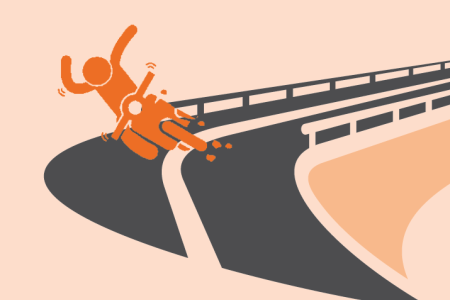A third of road deaths in the EU happen in single vehicle crashes: crashes in which the driver/rider of the vehicle and/or passengers are killed, but no other road users are involved. In the past 10 years around 100,000 road deaths occurred in the EU and more than 60% of were on rural roads. Young drivers and riders aged 18-24 have the greatest risk of being involved in fatal single vehicle crashes; their risk is twice as high as for the 25-49 age group. These are some of the conclusions of ETSC PIN Flash Report 32 Reducing deaths in single vehicle collisions of which SWOV’s Henk Stipdonk is one of the authors.
Appropriate road design and appropriate speed will help to reduce deaths in several European countries, according to the study. This is part of the explanation of why The Netherlands has below average death rates in single vehicle crashes: it has removed roadside obstacles and upgraded its two star roads to three stars, based on the international EuroRAP safety standard system.
In 2011, a SWOV in-depth study found that distraction was the most frequent factor to play a role in single vehicle crashes (31%). This was followed by speeding (27%), alcohol use (19%) and fatigue (17%).
Measures
On the European level the ETSC report calls on the EU to make overridable Intelligent Speed Assistance, Autonomous Emergency Braking and advanced seat belt reminders on all passenger seats mandatory in all new cars.
The report urges national governments to:
- Remove obstacles from the roadside of rural main roads and motorways or install safety barriers when the obstacles cannot be removed;
- Conduct in-depth crash studies of fatal and serious injury crashes to identify possible roadside improvement measures;
- Introduce Graduated Driving Licence systems to address the high risks associated with young novice drivers;
- Improve enforcement of speed limits on rural roads and motorways, use of seat belts or helmets, and laws concerning drink driving and driver distraction;
- Install barriers friendly to powered two-wheelers in areas where motorcycle crashes may occur.

